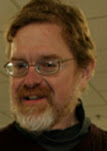For information on the English Folk Revival, a HUGE topic take a look at http://eds.efdss.org/
English Dance & Song exists to interest, inform and stimulate the membership of the EFDSS, as well as the wider folk music and dance community.
The range of interests include traditional song, traditional dance (social, display, ceremonial), traditional music, custom and children's games. The geographical spread is not confined to England, but may also include Scotland, Wales and Ireland; as well as the USA, and other areas of the world which may be appropriate.
Some names to check out: Maddy Prior, June Tabor, Ceilidh Minogue, Lau, the Musical Tradition’s Meeting’s a Pleasure CDs, Mary Humphreys & Anahata, Cyril Tawney, Alison McMorland & Geordie McIntyre, Fernhill, All Jigged Out, The Watersons.
The ‘rediscovery’ of English folk song has taken place in two (not entirely discrete) waves. The first gathered momentum in the last decades of the nineteenth century and flourished in the early part of the twentieth. This ‘first’ revival arose out of a desire to collect and preserve what was held to be archetypically English song. The ‘second’ (post-war) folk revival has made extensive use of the materials collected in the first revival, but has also in part been a reaction to the way in which the earlier collectors selectively edited their material and arranged it for a more middle-class audience.
Information on the post-war revival can also be gleaned from the pages of magazines such as Folk Review, Sing, Spin, and more recently Folk Roots and The Living Tradition.
This is a blog for the audience of WICN's The Folk Revival ~ 3 hours of the folk of the folk revivals of the 20th century into the 21st century. Hosted by Nick noble sharing some of his favorite roots and branches of folk music. Scroll down right column for interesting lists and information.



















